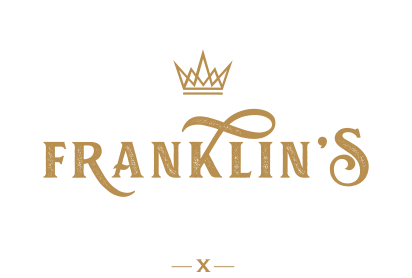
Moving can be one of life's most exciting yet daunting tasks. Have you ever felt overwhelmed by the sheer amount of work it takes to move from one place to another? Whether it's your first time moving or you're a seasoned pro, having a comprehensive moving checklist can transform chaos into a structured adventure. Imagine crossing off each task with satisfaction, knowing you're one step closer to settling into your new home with our reliable moving services.
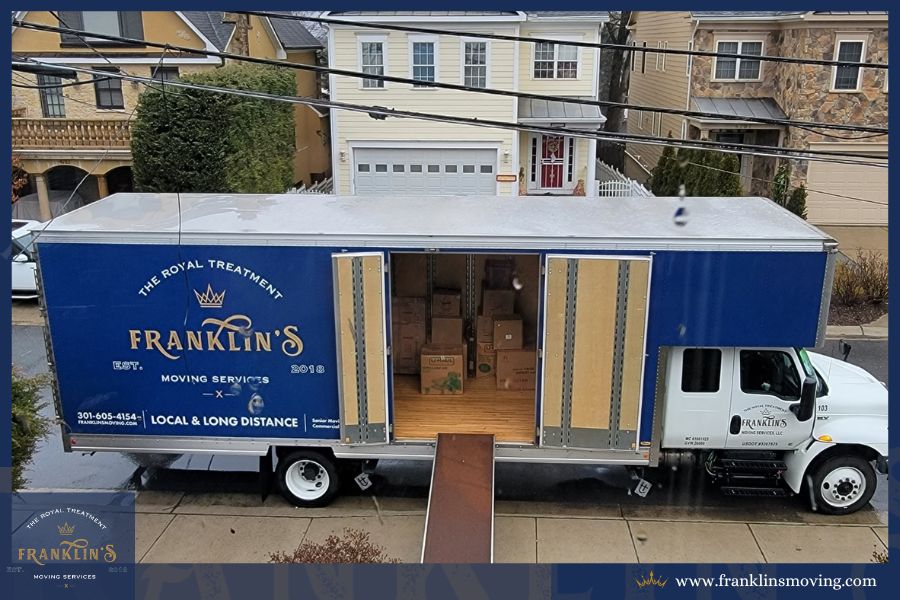
Today, we’ll dive into the ultimate guide that covers everything you need for a smooth move:
- The best strategies for decluttering your space before the big move.
- Essential packing tips that save time and protect your belongings.
- A step-by-step moving timeline to keep you on track without the stress.
- Key considerations for selecting a moving company you can trust.
- Advice for settling into your new home and community with ease.
Starting Your Move on the Right Foot
Initiating your moving process with confidence means planning and making informed decisions. One of the first and most crucial steps is finding a trusted moving company. This decision can significantly impact the ease and success of your move. A reliable mover not only ensures the safe transport of your belongings but also provides peace of mind throughout what can be a stressful time.
Research and Choose a Trusted Moving Company
Choosing the right moving company involves more than just searching for "moving services" online. It's about ensuring they meet specific criteria that align with your needs and expectations. Here's how to ensure you choose a mover that's both trustworthy and efficient:
- Check for licensing: Legitimate movers are required to have proper licensing. For interstate moves, look for a USDOT number, a unique identifier issued by the United States Department of Transportation.
- Read reviews: Online reviews on platforms like Google and industry-specific sites can provide insights into customer experiences. Pay attention to comments about professionalism, timeliness, and how the company handles issues.
- Get estimates: Reputable companies offer free, no-obligation estimates. Obtain quotes from multiple movers to compare costs. Remember, extremely low quotes could be a red flag.
Booking early is also crucial. The best movers have busy schedules, especially during peak moving seasons. Securing your preferred moving date well in advance ensures you won't have to compromise on quality or convenience. Consider these points when planning your move:
- Start your search at least two months before your intended move date.
- Avoid last-minute bookings to prevent higher costs and limited availability.
- Confirm your booking details, including the date and services, in writing.
Create a Realistic Moving Budget
Creating a realistic moving budget is a cornerstone of stress-free relocation. Understanding the potential costs involved helps you avoid surprises and manage your finances effectively during the move. It's not just about the price of hiring movers; several other expenses need consideration to ensure a smooth transition.
When planning your budget, here are some key costs to include:
- Moving company fees: This is often the most significant expense. Costs can vary widely based on distance, the volume of items, and the type of service (full-service, packing, unpacking).
- Packing supplies: Boxes, tape, bubble wrap, and special containers for delicate items add up. You might also need tools to dismantle furniture.
- Unexpected expenses: Set aside funds for last-minute needs, like cleaning services or hotel stays, if your new home isn't ready.
Here’s how to save money and sidestep common financial traps during your move:
- Compare moving quotes: Don’t settle for the first estimate. Get several quotes to ensure you’re getting fair pricing.
- DIY packing: Packing yourself can save on costs. Start early to avoid the stress of last-minute packing.
- Declutter before moving: Selling or donating items you no longer need reduces moving volume and may even put some extra cash in your pocket.
- Reuse packing materials: Collect boxes from local stores or friends who’ve recently moved. Use newspapers and towels for padding instead of buying bubble wrap.
- Schedule your move wisely: Moving during off-peak times, like mid-week or mid-month, can lead to lower rates.
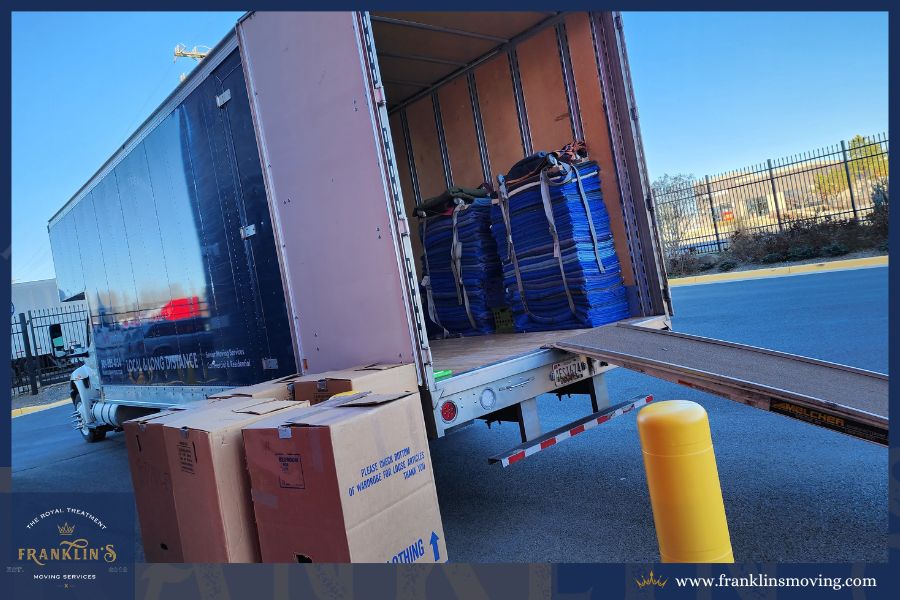
One Month Before Move-Out
With one month left until moving day, it's time to kick things into higher gear. This phase is crucial for managing tasks that require attention before the final week. Let's focus on packing non-essentials and seasonal items and the importance of notifying landlords, employers, and schools about your upcoming move. Addressing these tasks now ensures a smoother transition as your moving day approaches.
Packing Non-Essentials and Seasonal Items
Start by sorting through items you won't need in the immediate future. This includes out-of-season clothing, decorative pieces, and rarely-used gadgets. Here's how to tackle this efficiently:
- Create an inventory: List everything you plan to pack. This helps track your belongings and ensures nothing gets lost.
- Gather quality packing materials: Invest in sturdy boxes, packing tape, and protective wrapping to keep your items safe.
- Label everything: Use a clear labeling system to mark what's in each box, which room it belongs to, and whether it's fragile.
Notifying Key People and Institutions
It's also time to inform important people and places about your move. This ensures no interruptions in your mail, services, or personal life. Consider these notifications:
- Landlords and property managers: Give formal notice according to your lease agreement to avoid any end-of-lease complications.
- Your workplace: Notify your employer to arrange for any necessary changes in contact information or work arrangements.
- Schools: If you have children, inform their current and future schools to ensure a smooth transition in their education.
Two Weeks Before Move-Out
As your moving day inches closer, you're entering what could be the busiest phase of your moving process. With only two weeks left, tightening loose ends is crucial to ensuring a seamless move. This period involves confirming details with your moving company and starting the deep cleaning of rooms while organizing essential documents. Taking these steps prepares your home for departure and sets the stage for a smooth transition to your new space.
Confirming Details with Your Moving Company
Now is the time to double-check your arrangements with the movers. Ensuring everyone is on the same page is vital for avoiding last-minute surprises. Here are some key points to cover:
- Reconfirm the moving date and time: Make sure the schedule hasn't shifted and that the movers have your correct address.
- Inventory check: Review the list of items to be moved, especially if you've made any changes since the initial estimate.
- Payment details: Understand the payment process, including the final estimate, payment methods, and if any deposit is required ahead of time.
Start Deep Cleaning of Rooms
Deep cleaning before you move out is not only courteous if you're leaving a rental but also helps you avoid potential charges for cleaning fees. Start this process now to reduce stress as moving day approaches:
- De-clutter each room: This makes cleaning easier and ensures you're not moving items you don't need.
- Clean from top to bottom: Dust ceiling fans and light fixtures first, then move down to windows, walls, and floors.
- Don't forget hidden areas: Clean inside cabinets, closets, and appliances you're leaving behind.
Organizing Important Documents
Don't overlook the importance of keeping your essential documents organized and accessible:
- Gather personal records: Birth certificates, passports, medical records, and school records.
- Financial and legal documents: Organize bank statements, contracts, and other critical financial information.
- Moving documents: Keep your moving estimate, contract, inventory list, and other related documents in one place, preferably in a folder that you'll carry with you.
One Week Before Move-Out
With just one week before your move, the finish line is in sight. This is the time to ensure that most of your home is packed, leaving only the essentials you'll need for the last few days and the first night in your new home. Achieving this makes the final days before the move less hectic and simplifies the unpacking process, allowing you to settle into your new space more quickly and comfortably.
Finish Packing Most of Your Home
At this point, your goal should be to have nearly everything packed. Here's a brief overview to ensure you're on track:
- Living Areas & Bedrooms: Pack all decor, books, and non-essential clothing. Leave out only the outfits you'll wear over the next week.
- Kitchen: Pack all but one set of dishes and cutlery per family member, plus any cooking essentials you might need for simple meals.
- Bathroom: Pack extra toiletries and towels, keeping only what's necessary for daily use.
Prepare an Essentials Box
The essentials box is crucial for a smooth transition. It should contain items you'll need for the first night in your new home, so you're not rummaging through boxes after a long day of moving. Consider including:
| Category | Items |
| Personal | Clothing, toiletries, medications |
| Bedding | Sheets, pillows, blankets |
| Kitchen | Snacks, disposable plates/cutlery, kettle or coffee maker |
| Cleaning | Basic cleaning supplies, trash bags |
| Tools | Screwdrivers, hammer, nails |
| Entertainment | Books, tablet, chargers |
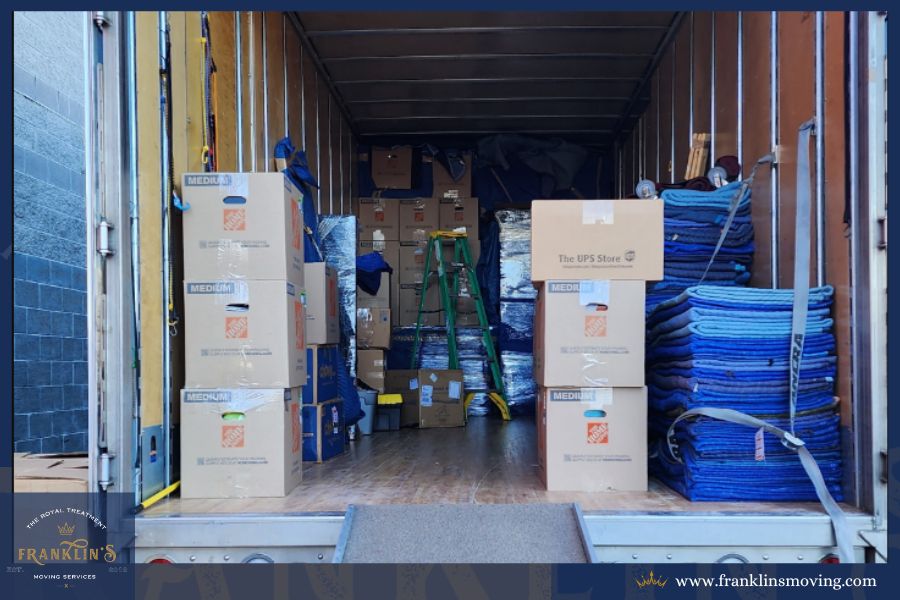
Making Your New House a Home
Moving into a new house is more than just relocating your belongings; it's about creating a comfortable and welcoming environment for you and your family. Once the moving trucks have departed, the journey of turning your new house into a home begins.
This stage is exciting, as it's your chance to arrange and decorate your space exactly how you envision it. By focusing on initial unpacking and organization, you can start this new chapter on the right foot, ensuring a seamless transition into your new life.
Initial Unpacking and Organization
The key to efficient unpacking is having a strategy. Here are some tips to help you unpack and organize your new home effectively:
- Start with the essentials: Unpack the essentials box first to ensure you have everything you need for the first night. This includes toiletries, bedding, and any immediate kitchen items.
- Prioritize rooms according to need: Generally, the kitchen, bathrooms, and bedrooms should be your top priorities. Getting these areas set up first can significantly improve your comfort and functionality in the new space.
- Unpack room by room: Focus on one room at a time to prevent feeling overwhelmed. Complete the unpacking and basic setup of one area before moving on to the next.
- Keep an inventory list handy: As you unpack, check items off your inventory list. This not only helps you keep track of your belongings but also ensures nothing gets lost or damaged during the move.
- Break down boxes as you go: To avoid clutter, flatten boxes and stack them in a designated area for recycling or disposal once they're empty. This keeps your space clear and manageable.
Setting Up Utilities and Services
After you've started to settle into your new home, the next step in making your space truly livable is ensuring all essential utilities and services are up and running. From the warmth of your heating to the glow of your lights and the connection to the outside world through the internet, these services are vital to turning a house into a home. This step might seem daunting at first, but with a little organization and research, you can easily set up your utilities without a hitch.
Checklist for Setting Up Utilities
To streamline this process, here’s a checklist of the key utilities you’ll need to set up, along with tips on how to select the best providers:
- Electricity: Check if your area has multiple providers. Compare rates, plans, and renewable energy options.
- Water and Sewer: Usually managed by the local municipality. Contact them directly to ensure water services are switched over to your name.
- Gas: If your home uses gas for heating or cooking, research local providers and safety records.
- Internet and Cable: Research local providers, comparing speeds, packages, and customer service ratings. Consider your family’s usage patterns to select an appropriate plan.
- Trash and Recycling: Find out the days of service in your new area and any recycling policies or restrictions.
Finding the Best Providers
Selecting the best utility providers requires a bit of homework. Here are some strategies to ensure you make informed decisions:
- Ask neighbors or local Facebook groups: Getting recommendations from locals can give you insight into the reliability and customer service of providers.
- Use comparison websites: For utilities like internet and cable, comparison websites can help you see all available options in one place.
- Check for bundle deals: Sometimes, providers offer bundle packages for services like internet, cable, and phone, which can save money.
- Understand the terms: Look out for any installation fees, minimum contract periods, and early termination fees before signing up.
Adapting to Your New Environment
Moving into a new home is just the beginning of your adventure. The next exciting chapter involves adapting to your new environment, which includes getting familiar with your neighborhood and ensuring all your details are up-to-date with the necessary government agencies. This phase is about more than just settling into your house; it's about integrating into your community and making your new area feel like home.
Exploring Your New Neighborhood
Venturing out and exploring your new neighborhood is a delightful way to start feeling at home. Here are some suggestions for getting to know your new surroundings and the importance of updating your address:
- Take a walk around your neighborhood: It’s a simple yet effective way to familiarize yourself with the area. Look out for local parks, cafes, and stores.
- Visit local businesses: Supporting local businesses not only helps you get to know the area better but also allows you to meet locals and other newcomers.
- Join community groups: Look for local community groups or clubs that align with your interests. This can be a great way to make new friends and get involved.
- Attend local events: Whether it's a farmers' market, a street fair, or a school event, participating in local activities can help you feel more connected to your community.
- Use local resources: Libraries, community centers, and local bulletin boards can be great resources for finding out about upcoming events and opportunities to engage with your community.
Updating Your Address with Government Agencies
Once you're settled, it's crucial to update your address with various government agencies to ensure you receive important mail and services without interruption. Here's a quick checklist:
- Postal service: Submit a change of address form to redirect your mail.
- Driver’s license and vehicle registration: Update your address with the DMV to ensure your driver’s license and vehicle registration are current.
- Voter registration: Make sure your voter registration is updated to reflect your new address so you can participate in local, state, and federal elections.
- Social Security Administration: If you receive benefits or mail from the SSA, updating your address is essential.
- IRS and state tax agency: Ensure your tax documents are sent to the right address by notifying the IRS and your state’s tax agency of your move.
Becoming a Part of The Community
After moving, trying to be a part of your new community is just as crucial as unpacking boxes. It's about building connections, finding your place, and feeling at home in your new surroundings. Engaging with your community can lead to new friendships, valuable support networks, and enriching experiences that help you and your family settle in more quickly.
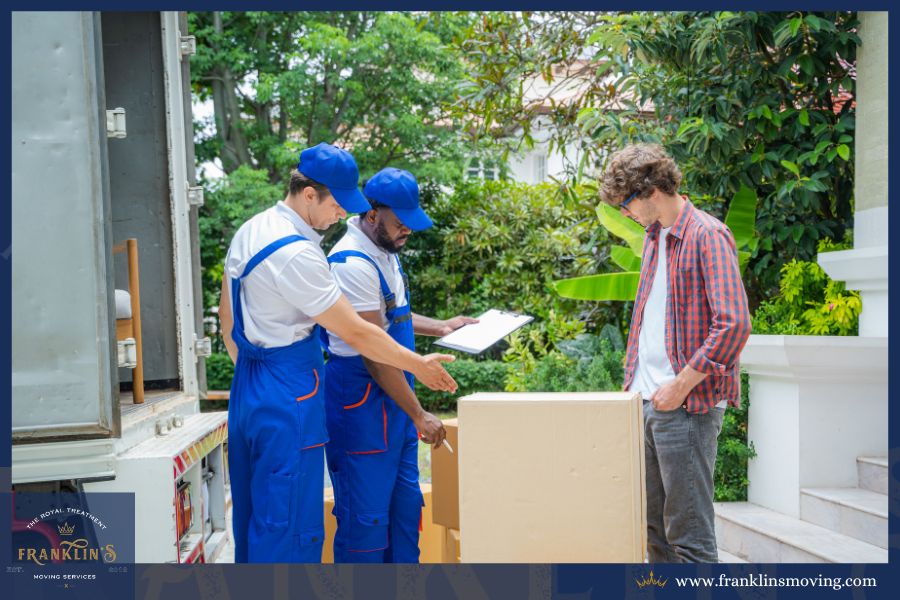
Post-Move: Ensuring a Smooth Transition
After settling into your new home, ensuring the safety and security of your living environment becomes a top priority. It's an essential step for peace of mind and protecting your family and belongings. Establishing a home safety and security plan is crucial in the post-move phase, allowing you to address potential risks and take preventative measures to secure your home effectively.
Home Safety and Security Checklist
Creating a safe and secure home involves more than just locking doors. Here’s a comprehensive checklist to help safeguard your new space:
- Change the Locks: You never know who might have a key to your home. Changing locks is a basic but critical step in securing your property.
- Install Smoke Detectors and Carbon Monoxide Detectors: Ensure these devices are in key areas of the home, such as near bedrooms and the kitchen, and test them regularly.
- Create an Emergency Exit Plan: Familiarize yourself and your family with the best ways to exit the home in case of an emergency and designate a meeting spot outside.
- Secure Windows: Check that all windows have sturdy locks and consider adding window sensors or security film for added protection.
- Light Up the Exterior: Motion-sensor lights around the home’s exterior can deter intruders and improve safety when arriving home after dark.
Setting Up a Home Security System
A home security system can significantly enhance your home’s safety. Here are some suggestions for choosing and setting up the right system:
- Assess Your Home’s Needs: Determine vulnerable points in your home and what features are most important to you, such as surveillance cameras, motion detectors, or smart locks.
- Choose a Reputable Provider: Research and select a security system provider with excellent reviews and reliable customer service. Consider whether you prefer a professionally installed system or a DIY option.
- Consider Smart Home Integration: Many security systems now offer integration with smart home devices. Look for systems that allow you to monitor and control security features remotely through a smartphone app.
- Regular Maintenance Checks: Once your system is installed, regularly test it and check batteries in sensors to ensure everything is functioning correctly.
Managing Post-Move Tasks
Once you’ve settled into your new home and ensured its safety and security, the next step is managing the remaining post-move tasks. This phase involves finishing the unpacking process, organizing your living spaces, and addressing the stress often accompanying moving. It's important to approach these tasks methodically to avoid feeling overwhelmed and to make your transition into the new home as smooth as possible.
Handling Remaining Unpacking and Organization Tasks
Even after the initial unpacking, there might still be boxes lying around or rooms that need further organization. Here’s how to tackle these lingering tasks:
- Set Small, Achievable Goals: Focus on unpacking one box at a time or setting up one room per day to make progress without feeling swamped.
- Organize as You Unpack: Place items directly where they belong to avoid having to reorganize later. Use this opportunity to optimize your new space.
- Declutter Again: You may discover items that you no longer need during unpacking. Don’t hesitate to donate or sell these items to reduce clutter.
Dealing with Moving-Related Stress and Settling In
Moving can be an emotionally and physically draining experience. Here are some tips to manage stress and settle into your new environment:
- Take Breaks and Treat Yourself: Ensure you take regular breaks during the unpacking process. Celebrate small victories with treats or a relaxing activity.
- Stay Connected: Keep in touch with friends and family. Sharing your experiences can provide emotional support and make you feel less isolated.
- Explore Your New Area: Take walks or drive around your new neighborhood. Discovering local shops, parks, and restaurants can help you feel more at home and connected to your new surroundings.
- Establish Routines: Getting back into a regular daily routine can provide a sense of normalcy and stability amidst the chaos of moving.
Conclusion
Preparing for a move can be overwhelming, but with this essential checklist, you can tackle each task systematically and ensure a smooth transition to your new home. Start by decluttering and organizing your belongings, then create a detailed plan for packing and labeling boxes. Don't forget to arrange for utilities and change your address to avoid any interruptions. Lastly, enlist the help of friends or professional movers to assist with heavy lifting and transportation. By following these steps, you'll be well-prepared for a stress-free move.
Frequently Asked Questions
What’s the best way to declutter before a move?
Decluttering before a move is essential for minimizing your load and simplifying your transition. Start by categorizing your items into what you want to keep, donate, sell, or discard. Tackling one room at a time prevents feeling overwhelmed and ensures a thorough process. For items you're unsure about, ask yourself if you've used them in the last year and if they have a place in your new home. Selling items through online marketplaces or garage sales can be both financially beneficial and a great way to declutter. Donating items to local charities or giving them away to friends and family can also be rewarding. Remember, the less you have to move, the easier and cheaper your moving process will be.
How can I ensure my valuables are safe during the move?
Ensuring the safety of your valuables during a move requires careful planning and packing. Begin by creating an inventory of your valuable items, including jewelry, important documents, and heirlooms. Use high-quality packing materials such as bubble wrap, sturdy boxes, and packing tape to secure these items. Consider transporting very valuable or irreplaceable items with you personally instead of loading them onto the moving truck. Additionally, look into moving insurance options for added security, and choose a reputable moving company with positive reviews and reliable service to handle your belongings.
What are the essential items for my first night in a new home?
Preparing an essentials box for your first night in a new home can make the transition much smoother. This box should include toiletries (toothbrush, toothpaste, soap), a change of clothes, bed linens, towels, basic kitchen supplies (a few dishes, utensils, a pot or pan), essential electronics (phone charger, laptop), and any medications. Also, pack snacks, bottled water, and basic tools for assembling furniture. Having these essentials easily accessible means you won't be searching through boxes after a long day of moving.
How do I update my address across all necessary services?
Updating your address across all necessary services ensures a seamless transition. Start with the United States Postal Service (USPS) by submitting a change of address form online or at your local post office. Next, update your address with government agencies such as the DMV for your driver's license and vehicle registration, as well as the IRS. Don't forget to notify utility companies, banks, insurance providers, and subscription services. Creating a checklist of all the places you need to update can help streamline the process.
How can I make moving with children or pets less stressful?
Moving with children or pets requires additional planning to ensure their comfort and safety. For children, involve them in the moving process by letting them pack a small box of their favorite items. Discuss the move with them, focusing on the exciting aspects of the new home. For pets, keep them in a quiet and secure area on moving days to reduce stress. Update their microchip and tags with your new address. Pack a travel bag for your pet with food, water, bowls, and familiar toys. Remember, maintaining routines as much as possible helps both children and pets adjust more quickly to their new environment.
Ready for Your Move? Let Franklin's Moving Services in Manassas, VA, Help!
Navigating through a move can be challenging, but Franklin's Moving Services in Manassas, VA is here to ensure your journey is as smooth and stress-free as possible. Our expert team is dedicated to providing comprehensive moving solutions tailored to your unique needs. From careful packing of your belongings to efficient unpacking in your new home, we've got every aspect of your move covered. Our commitment to excellence and customer satisfaction sets us apart, making us the go-to choice for a hassle-free moving experience. Contact us today to begin planning your move with Franklin's Moving Services, where we turn the daunting task of moving into a seamless adventure.
